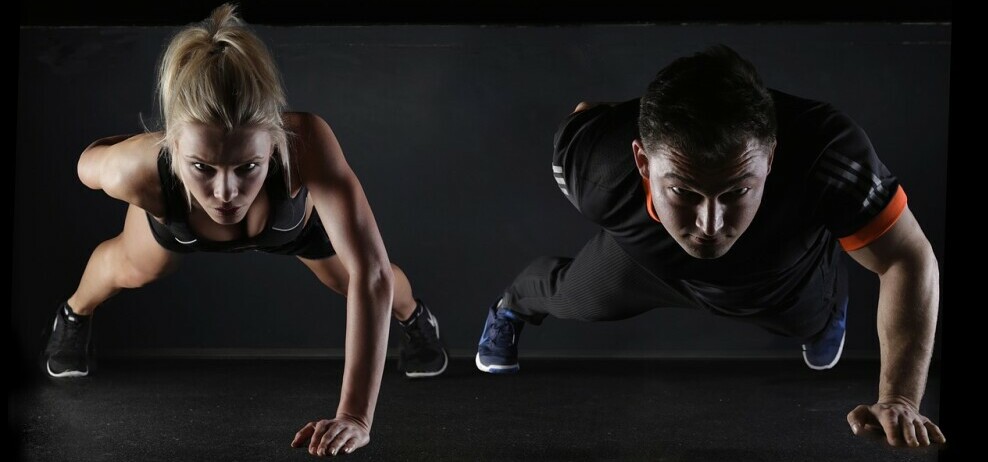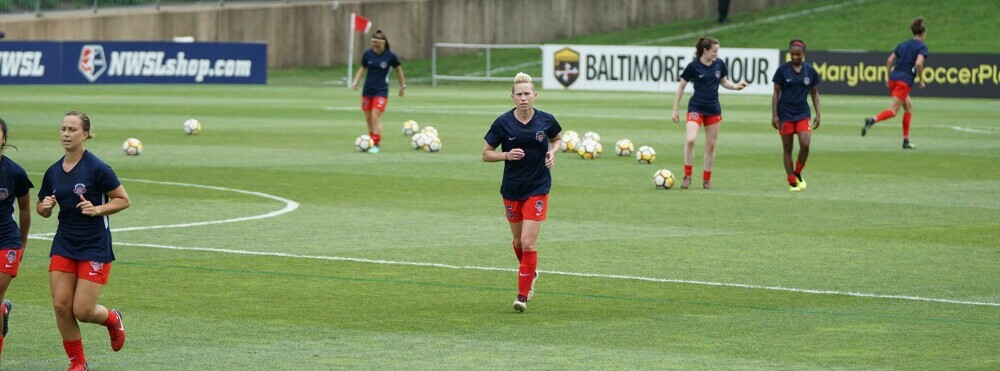Plyometric exercises, often referred to as “plyos,” are dynamic movements that involve rapid stretching and contracting of muscles to generate explosive power.
These exercises are designed to enhance the neuromuscular system’s ability to produce maximum force in the shortest possible time, making them highly beneficial for soccer players looking to improve their athletic performance on the field.
 What are Plyometric Exercises?
What are Plyometric Exercises?
Plyometric exercises involve quick, powerful movements that start with an eccentric (lengthening) phase followed immediately by a concentric (shortening) phase.
This rapid transition from muscle lengthening to contraction utilizes the stretch-shortening cycle (SSC), which enables muscles to store and release energy more efficiently.
Common plyometric exercises for soccer players include jumps, bounds, and hops, which target lower-body muscles involved in sprinting, cutting, and jumping.
Now, why should you, as a soccer player, pay attention to plyometrics?
Simple.
It’s going to include movements that mimic the dynamism of soccer – like quick changes of direction, sprints, and jumps.
Plyometric training is designed to improve your muscular power and explosiveness, giving you the edge to outperform your competition when it matters most.
Lets look at the benefits of these exercises.
Benefits for Soccer Players
1. Improving Explosive Power: Plyometrics are renowned for their ability to increase explosive power, which is crucial for soccer players during actions like sprinting, jumping for headers, and accelerating to beat opponents.
By enhancing muscle recruitment and activation, plyometrics enable players to generate more force and speed in their movements.
2. Enhancing Agility and Quickness: Agility, the ability to change direction quickly and effectively, is paramount in soccer.
Plyometric exercises train the neuromuscular system to react swiftly to changes in direction, helping players evade defenders or close down opponents more effectively.
3. Boosting Speed and Acceleration: Plyometric training focuses on improving the rate of force development, enabling soccer players to accelerate faster from a stationary position or during transitions between different speeds on the field.
4. Injury Prevention: Strengthening muscles, tendons, and ligaments through plyometric exercises can reduce the risk of injuries such as strains and tears, which are common in soccer due to the high demands placed on the lower body during dynamic movements.
5. Enhancing Vertical Jump and Heading Ability: Plyometrics are particularly effective in improving vertical jump height, crucial for winning aerial duels and scoring goals from crosses.
Increased lower-body power translates to more forceful headers, benefiting both offensive and defensive aspects of the game.
6. Improving Overall Fitness: Incorporating plyometrics into a soccer player’s training regimen can enhance cardiovascular fitness, muscular endurance, and overall athleticism, contributing to sustained performance throughout matches and the season.
Whether you’re just starting out or you’ve been playing soccer for years, there’s a place for plyometric training in your routine.
I’ll help you understand how plyometric exercises can be scaled and customized to match your current fitness level and soccer abilities.
Essential Plyometric Exercises for Soccer Players
Plyometric exercises are integral to soccer training, enhancing explosive power, agility, and speed essential for optimal performance on the field.
Here are specific plyometric exercises tailored for soccer players, each targeting distinct muscle groups and improving soccer-specific movements:
1. Depth Jumps
Description: Depth jumps involve stepping off a box or platform, landing on both feet, and immediately jumping vertically or horizontally upon ground contact.
Benefits:
- Muscle Focus: Engages the quadriceps, hamstrings, calves, and glutes, promoting strength and power development.
- Improves: Vertical jump height, crucial for winning aerial duels and headers.
- Enhances: Reactive strength and neuromuscular coordination, vital for quick changes in direction and explosive movements on the field.
2. Box Jumps
Description: Box jumps require jumping onto and off a box or platform, focusing on maximal effort and height in each repetition.
Benefits:
- Muscle Focus: Targets lower-body muscles, including quadriceps, hamstrings, and calves, improving strength and explosive power.
- Develops: Vertical jump ability, aiding in aerial duels and leaping for shots or defensive clearances.
- Enhances: Overall lower-body coordination and proprioception, crucial for balance and stability during dynamic soccer movements.
3. Lateral Bounds
Description: Lateral bounds involve leaping horizontally from one leg to the other, emphasizing explosive lateral movement and balance.
Benefits:
- Muscle Focus: Works on hip abductors, adductors, and gluteus medius, enhancing lateral agility and stability.
- Improves: Sideways acceleration and deceleration, essential for defensive maneuvers and quick changes in direction on the field.
- Enhances: Coordination between the lower body and core muscles, facilitating sharper turns and cuts during gameplay.
4. Skater Jumps
Description: Skater jumps mimic the lateral movement pattern of ice skaters, involving a lateral leap from one leg to the other while maintaining balance and control.
Benefits:
- Muscle Focus: Engages quadriceps, hamstrings, glutes, and hip abductors, improving lateral explosiveness and dynamic stability.
- Develops: Agility and quick directional changes, crucial for evading opponents or shifting positions defensively.
- Enhances: Lower-body proprioception and spatial awareness, aiding in maintaining balance during sudden shifts in momentum on the field.
5. Single-Leg Hops
Description: Single-leg hops involve hopping on one leg repetitively, focusing on maximal height and power output in each jump.
Benefits:
- Muscle Focus: Targets calf muscles, quadriceps, and stabilizing muscles around the ankle and knee joints, enhancing unilateral strength and stability.
- Improves: Balance and coordination on each leg individually, crucial for dribbling, shooting, and maintaining control during dynamic movements.
- Enhances: Explosive power and endurance in the lower body, essential for sprinting and maneuvering in congested areas of the field.
Plyometric Drills for Speed and Agility
Plyometric drills are essential for enhancing speed, agility, and quickness on the soccer field. These exercises not only improve explosive power but also sharpen reactive abilities necessary for fast-paced game situations. Here are effective plyometric drills that combine various exercises with cones, ladders, and agility hurdles to simulate game-like scenarios:
1. Cone Drill Combinations
Description: Utilize cones to set up drills that require rapid changes in direction, acceleration, and deceleration.
Drills:
- T-Drill: Arrange cones in a T-shape formation. Start at the base, sprint forward to the top cone, shuffle laterally to touch the side cone, shuffle back to the base, and then sprint backwards to finish.
- Box Drill: Position cones to form a square or rectangle. Perform quick movements around the cones, alternating between forward sprints, lateral shuffles, and backward runs.
Benefits:
- Improves: Acceleration and deceleration capabilities crucial for reacting to game scenarios.
- Enhances: Agility and change-of-direction speed, essential for evading opponents and positioning defensively or offensively.
2. Ladder Agility Drills
Description: Use agility ladders to perform rapid footwork patterns that mimic soccer-specific movements.
Drills:
- In-and-Outs: Stand facing the ladder, step into the first box with both feet, then step out, repeating the pattern down the length of the ladder.
- Lateral Shuffle: Shuffle laterally through each box of the ladder, maintaining a low center of gravity and quick foot turnover.
- Ickey Shuffle: Alternate stepping inside and outside each ladder box, emphasizing rapid lateral movement and coordination.
Benefits:
- Develops: Foot speed and coordination necessary for precise dribbling, quick passes, and defensive maneuvers.
- Enhances: Reactive agility and spatial awareness, improving the ability to change direction swiftly and maintain balance during dynamic play.
3. Agility Hurdle Drills
 (Picture courtesy of Manchester United WhatsApp Bulletin)
(Picture courtesy of Manchester United WhatsApp Bulletin)
Description: Incorporate agility hurdles at varying heights to challenge vertical and lateral explosiveness.
Drills:
- Hurdle Hops: Jump over hurdles placed in a line, focusing on explosive take-offs and soft landings.
- Lateral Hurdle Jumps: Arrange hurdles side by side. Perform lateral jumps over each hurdle, emphasizing quick lateral movement and balance.
- Single-Leg Hops: Alternate hopping over hurdles on one leg, enhancing unilateral strength and stability.
Benefits:
- Targets: Lower-body power and coordination, crucial for jumping headers, winning aerial duels, and explosive sprints.
- Improves: Vertical leap height and lateral quickness, aiding in reaching high balls and maneuvering around opponents with agility.
Integrating Plyometric Drills
Integrate these plyometric drills into regular training sessions to enhance speed, agility, and quickness specific to soccer demands.
Focus on proper technique and intensity, gradually increasing the challenge to continuously improve performance on the field.
By incorporating cones, ladders, and agility hurdles, players can simulate game-like scenarios, improving their ability to react swiftly and effectively during matches.
So you’ve got a grasp on the top plyometric exercises to boost your soccer prowess. Now, the next step is integrating them into your regular training without overdoing it. You’re going to find out about weaving these explosive movements into your weekly routine to maximize benefits without risking injury.
Plyometrics are intense, so timing is everything. I recommend interspersing plyometric sessions with skill-based practices. This isn’t just about jumping higher and running faster; it’s also about ensuring your body has ample recovery time.
You can always adjust your approach down the road, but start with a conservative frequency of two plyometric sessions a week. This frequency allows you to maintain the intensity required for each session while giving your muscles and joints the recovery they deserve.
Of course, don’t forget to keep a blend of other soccer drills in the mix. Plyometrics should complement your technical skills training, endurance work, and tactical drills, not replace them. It’s about finding that sweet spot where everything works in harmony.
Watch your progression closely. If you notice improved jump height, quicker sprints, or overall enhanced agility on the field, you’re on the right track. Adjust the volume and intensity of your workouts based on your performance and how your body feels.
And remember, this isn’t a race to the finish line. Your first attempt doesn’t need to be your last. Soccer fitness is a continuous journey, and plyometrics are a piece of the puzzle, not the whole picture.
Take away
In summary, choose plyometric exercises that resonate with you and fit neatly into your training regimen.
Stay committed to the process, and you’ll likely see tangible enhancements on the soccer field. And keep in mind, quality over quantity is key when it comes to plyometric training.
I would like you to share your experience with regards to plyometric exercises. Please leave your message in the comment section below and I will get back to you.
Happy training!!!!!!!!!!!
Here’s a little transparency: Our website contains affiliate links. This means if you click and make a purchase, we may receive a small commission. Don’t worry, there’s no extra cost to you. It’s a simple way you can support our mission to bring you quality content.





I guess I’m now a fan of this site lol, thanks for another eye opening article. Understanding how the dynamic movements in plyometric exercises can enhance explosive power and agility on the field is truly valuable information. As a soccer enthusiast, I now realize the importance of incorporating plyometric exercises into training routines, even though I’m not a player myself I think it’s good to practice them just to keep fit. Thank you for shedding light on this essential aspect of athletic performance – I can’t wait to see the results.
I am happy to have you as my first website fan lol. Thank you Elias